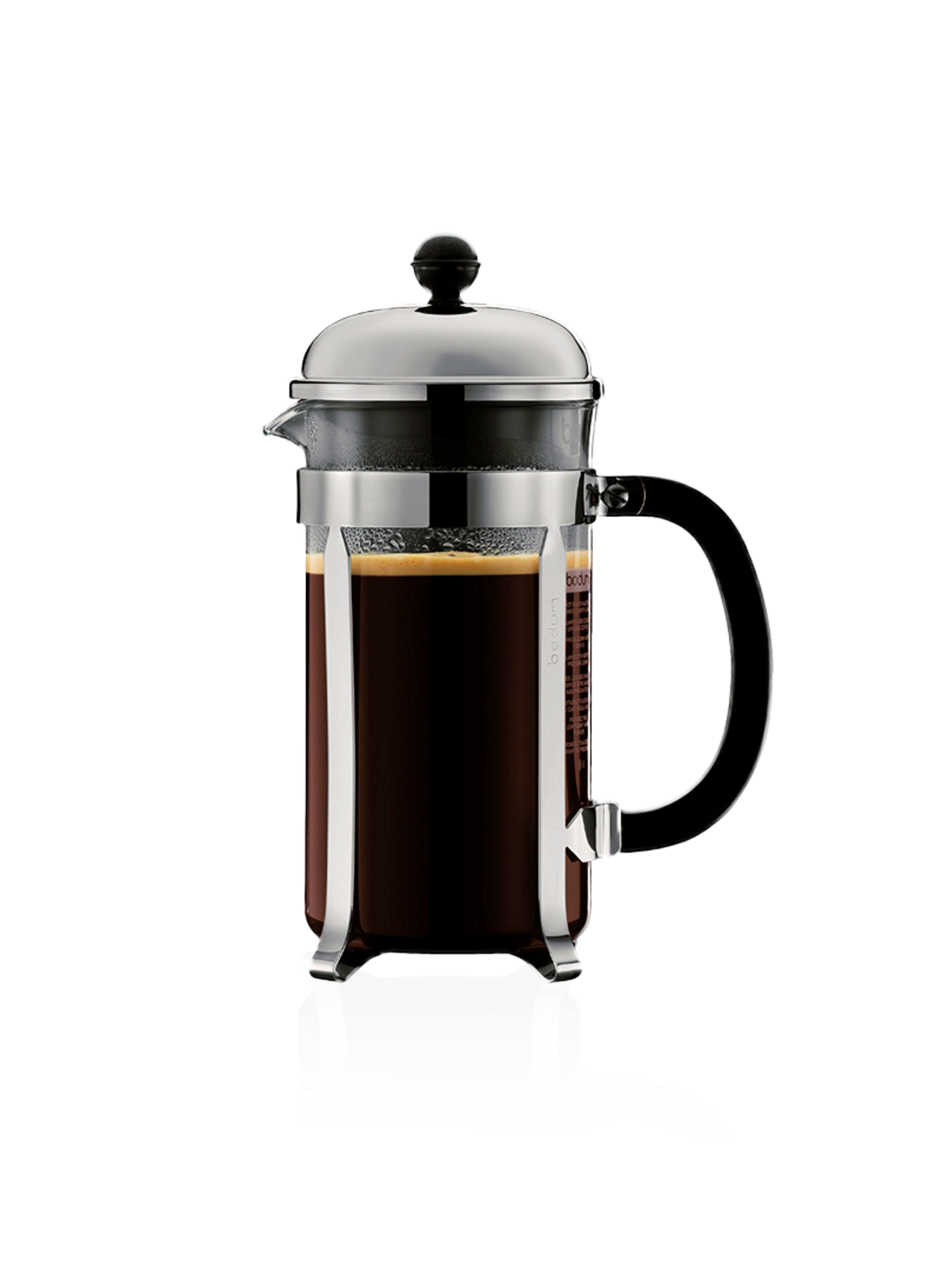Choosing The Best French Press
Considering The Design
You have three options: glass, stainless steel, and plastic. You will want to choose a press that has both a solid body and a sturdy plunger. We do not recommend using a plastic press to produce a quality brew, so we will leave it out. We recommend going with either the glass or stainless steel presses.
The Body
The glass body is fragile but offers an elegant and visual appeal, allowing you to observe the brewing process. The metal press offers a durable body but requires more preheating to ensure proper brewing temperature.
The Plunger And Lid
A high quality french press has a sturdy plunger. A lip on the lid ensures a sturdy press. The filter system typically consists of a cross plate, a screen, as well as a spiral plate to help hold everything down.
Our Recommendation
The Chambord French Press by Bodum has a strong and reliable design that’s made of tough materials. Its glass body, durable plunger, and metal frame ensure a great brew for years to come. It is easy and fast to clean which makes it a preferred brewing system for daily use.
What is the Best French Press Coffee?
No one can give a definitive answer to this question. There are no coffees that are meant only for french press. It is preferable to choose a coffee that is properly roasted and sourced to high standards. After finding a company that is dedicated to quality production, experiment with different origins and blends. At Fonté, we hand roast our beans to the highest of standards, so you can feel free to experiment with our coffees without thinking twice.
Where To Start
We recommend our Portofino Blend as a great starting point. It’s full body and lightly acidic trace are topped off with a deep, complex aroma. Earthy notes at the outset suggest a pleasing “musty” quality, while herbal aromas hint at the toastiness of a good Oolong tea. The finish is first dominated by chocolate and ends in hazelnut.
What is a Good Coffee to Water Ratio?
No matter the size of your french press, we recommend a coffee-to-water ratio of 1 (coffee):16 (water).
|
|
Coffee | Coffee | Water | Measurement |
| Beaker | Grams | Tbsp | oz | 4oz Cups |
| “3 cup” | 23 | 1.6 | 13 | 3 |
| “4 cup” | 45 | 3 | 25 | 4 |
| “8 cup” | 89 | 5.9 | 50 | 8 |
| “12 cup” | 134 | 9 | 76 | 12 |
Water Temperature (C/F)
Despite popular belief, coffee doesn't go well with boiling water. Too high of a temperature will extract undesirable flavors from your coffee. That’s why we recommend water slightly below the boil (200 degrees F or ~ 93 degrees C) for an optimal brew. This way, you extract all of the natural oils from the coffee beans, producing an impeccable taste.
Steeping Time
Allowing coffee grounds to brew in the beaker for the right amount of time allows all the natural oils to be extracted. Steeping time ranges from about 2 minutes and 30 seconds to 4 minutes and 30 seconds depending on variables including the type of coffee and desired taste. To keep things simple, we recommend beginning with a 3 minute and 30 second steep across all french press sizes.
Grind Size
Typically, brewing methods are categorized by their grind size and type of brewer. A proper grind is essential to an even and flavorful coffee extraction. The french press requires a coarser grind.
Choose The Right Grinder For The Job
Consider purchasing a reliable burr grinder for your home to grind fresh coffee on a consistent basis. If you are on a tight budget, consider a manual hand grinder.
We hope you enjoyed our version of how to properly prepare a french press. For more on brewing tips, coffee tasting, industry knowledge, etc., please subscribe to our newsletter.
Want to try your hand at making cold brew? Check out our French Press cold brew recipe.
Having trouble with terminology? Read our Jargon blog to get a handle on modern coffee vocabulary.
|
French press |
Grinder
|
Portofino
|




